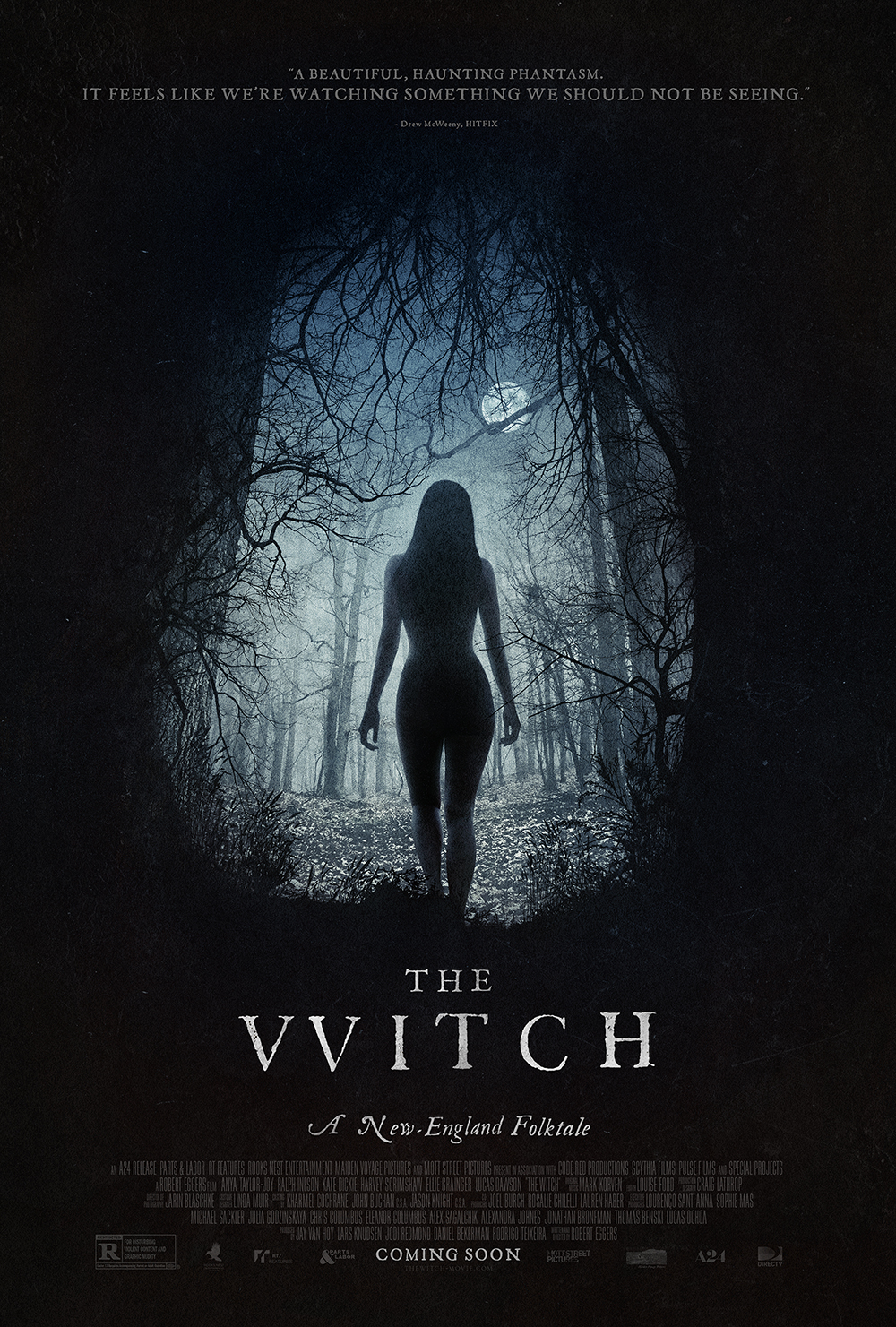
The Witch takes place in 17th Century New England and follows the story of a Pilgrim family who have left their home in Northern England to set up life in the New World. But they are asked to leave their new religious community, and they travel with their belongings loaded on to one cart, to a remote farmland on the edge of the woods. Soon after their arrival, their crop fails and the family’s new born baby vanishes from the care of the oldest daughter, Thomasin. From here on in, the family begins to deteriorate as accusations of witchcraft, religious obsession and grief overtake their lives.
At the end of the opening credits, the film states the narrative is based on New England folk stories from the era, and as a result, uses dialogue taken from the tales as written at the time. The language and delivery of old style English takes a little while to get used to but enhances the period horror. It forces the audience to listen closely to the words and to understand the emotions the characters are experiencing. The use of sound generally is used for dramatic effect in horror films, and in The Witch, it is exaggerated, reaching heightened discordant crescendos, frenzies. There are other points in the film where the lack of background music is notable by its absence.
Pilgrims mainly travelled from England to America due to their unconventional religious beliefs, and now, instead of being able to revel in their views, the family are ostracised. William (the father) is fanatically religious and when they reach their new home, the family are on their knees, arms held high towards the sky in prayer. Everyone is born a sinner and they are highly superstitious. The disappearance of new born baby Samuel only heightens these beliefs which are quickly given form; a woman is seen in the woods with the baby, and then she is naked, pounding away with a stick in a hollow tree trunk, blood splattering; blood which she smothers over her body. The Witch.
As with most horror films, there is a subtext of sexual awakening from teenage daughter Thomasin, with the copious amounts of blood symbolising not only the obvious- death, injury, violence- but also menstruation. Her younger brother Caleb, sneaks looks at her chest through her open shift when Thomasin’s asleep, repeating the glances later by the stream. Due to their isolation, there is no outlet for their curiosity and the religious beliefs forbids them from acknowledging their feelings. Caleb later succumbs to temptation of the flesh and suffers the ultimate punishment. The parents too are sexually repressed. William is impotent as he is unable to provide a harvest and feed his family. At one point in the woods, he has a hare in the sights of his rifle but when pulling the trigger the gun misfires, causes an injury to his face. Pride is a sin, as is lying and William is guilty of both and is eventually forced to admit his sins. Again, he suffers a punishment that fits his impotency.
The farmstead, meadow and streams are bleak, the colour washed out of the scenes. The woods too are filmed using very muted and natural colours, but the appearance of a second witch jolts the viewer with her voluptuously vivid red cloak. There is little optimism for the life they have, life is expected to be hard; as sinners they need to earn God's rewards. The family are close to nature, but nature itself is inherently evil and the children are forbidden from entering the woods. When they do venture in, the trees are leafless and barren, dead as though winter. There is a myriad of twigs and branches intertwining with each other which the characters literally have to fight through. The family’s complexities and internal struggles are manifested in the woods. There is a fear of nature, the unknown, leading to isolation and eventually madness. The young twins claim that Black Philip the goat speaks to them. A hare is seen in the woods and later in with the animals, representing both the promise of food and danger, as it lures family members further in to the woods.
The Witch has many conventions of the traditional horror film; the central character is a young female, there is death, blood, and a visible evil in the form of the witch. But the use of sound, colour and dialogue sets this aside from the usual glossy high budget Hollywood horrors and as a low budget art film, it has also divided audiences, with some laughing at the final twists whereas others remain totally engrossed.
